From their colonial roots to future alternatives, Kit Chapman looks at the chemistry of natural elastomers
In the jungles of Brazil, near to where the dark waters of the Rio Negro meet the vast, muddy flow of the Amazon, a worker scrapes expertly at a tree. The trunk is already stripped of bark in places, scarred by countless previous wounds that have left a criss-crossed mess of scratches, but with careful management years of useful life still remain. Pulling away his curved blade, a cross between a carving knife and a machete, the worker points to the edge of the bark he’s pulled free. Already, a milk-white stream of latex has begun to appear, leaking from the cut like blood from a cut. Slowly, it drips into a waiting iron cup.
The worker is harvesting rubber latex. It’s a crop whose chemistry is essential to the modern world – and one already reaching the limits of sustainability.
Heart of darkness
Most rubber comes from Hevea brasiliensis, the Pará rubber tree, which produces a thick latex in specialised cells, laticifers, to protect against insects. This is rich in elastomers, particularly cis-1,4-polyisoprene, along with a mix of proteins, fatty acids and resins.
‘Natural rubber has really unique properties,’ explains Anke Blume, a professor of elastomer technology and engineering at the University of Twente in the Netherlands. ‘Depending on the source, elastomers can have a glass transition temperature of –200°C to –50°C; natural rubber is about –70°C. Above this temperature it is elastic, so when you deform it, it returns to more or less the original shape.’ At a molecular level, long stereoregular polymer chains of natural rubber, an amorphous tangle at rest, can be stretched out to around 10 times their length before crystallising. ‘They have a very high entropic state,’ Blume says. ‘When you put stress on it, you get an orientation, but as soon as you remove the stress you get back to the coil.’
70% of natural rubber production is used in tyre compounds, but it has countless other uses
Rubber was harvested by the Aztec and Maya, who used latex to make sports balls and storage containers. But it wasn’t until the American chemist Charles Goodyear discovered vulcanisation in 1839 that the material showed its full potential. By heating the rubber with sulfur, Goodyear was able to attack the polymer’s allylic positions to form short cross-linking chains that link adjacent polymer strands, thus creating bridges that limited the extent the material could be stretched. In doing so, Goodyear was able to cure his rubber into materials of different shapes, elasticity and hardness. We see these materials everywhere. While an estimated 70% of natural rubber production is used in tyre compounds, it has countless other uses, from ‘elastic’ fibres in clothing and glue in textile industries to protective gloves, condoms and rubber bands. Large quantities of rubber-based materials are also used in shock absorption – from small coatings on personal electronics to the foundations of skyscrapers in earthquake zones.
Goodyear’s discovery sparked the first rubber boom. As the Hevea tree was only found near the Amazon, plantations emerged along the river basin. These were almost exclusively worked by slaves – Brazil was the last Western country to abolish slavery, in 1888 – who were each expected to tap thousands of trees each night and deliver 60kg of latex a week. The harvest would have then been smoked, dried and shaped into heavy, foot-long bales, charred black, for shipping around the world.
By the end of the 19th century, the rubber boom had shifted away from South America. In 1885, Leopold II, King of the Belgians, was granted control of the Congo Free State – today the Democratic Republic of Congo – for humanitarian reasons by the other colonial European powers. Instead, he turned the country into a 2 million km2 forced labour camp, ordering locals to work giant plantations of a rubber-producing vine, Landolphia owariensis. Rather than collect latex in cups, locals were forced to smear it onto their skin, drying it in the sun before ripping it off their flesh. Failure to meet the rubber quota was punishable by execution, with the worker’s hand collected as proof of death; unable to hit their impossible targets, villages soon began supplementing missed quotas with baskets of severed limbs taken from innocent victims. Around 10 million Congolese were killed before Leopold was stripped of power in 1908.
Ain’t nothing like the real thing
The Hevea plantations also faced competition from the British. In 1876, explorer and ‘bio pirate’ Henry Wickham smuggled 70,000 Hevea seeds out of Brazil. While most failed to germinate, several were used to create rubber plantations across India, Sri Lanka and Southeast Asia. Today, around 90% of rubber comes from Asia. The world’s leading exporter of the 14 million tonnes of rubber used every year is Thailand, with the crop often grown by impoverished smallholders who cannot pay workers a living wage.
In 2019, two leaf blights hit Southeast Asia. By the end of the year we had lost a million tonnes of production
Thanks to the seeds’ stolen origins, it’s a crop under constant threat. ‘The base genetic diversity is extremely narrow,’ says Katrina Cornish, a professor of bio-emergent materials at The Ohio State University in the US. ‘So all the trees are clones. For miles and miles, you have genetically identical trees. And that means if one catches a disease, they all go down.’ This is no longer only a possibility. ‘In 2019, two leaf blights, Pestalotiopsis and Neofusicoccum, hit Southeast Asia. By the end of the year we had lost a million tonnes of production, and it’s very difficult to get figures of how it’s spreading.’ Even if the spread is halted, the world has already lost around 7% of its natural rubber stock. This can’t be replaced easily, especially with demand likely to grow to 30 million tonnes a year in the near future.
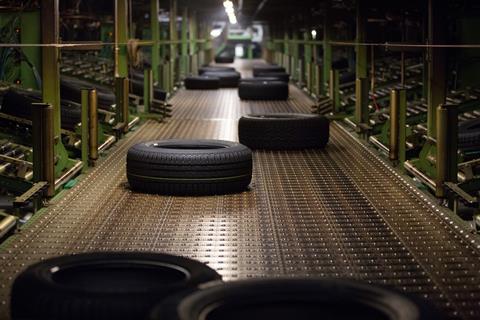
The situation is compounded by climate change as well as the ecological impact of Hevea trees, which only grow well in the tropics. ‘Indonesia and Malaysia have already lost huge swathes of rainforest due to rubber production,’ Cornish warns. ‘It’s a totally unsustainable model. As such there’s been a move to stop deforestation – but that means rubber can only grow where it’s planted already.’ Unable to expand production, and with the Covid pandemic causing demand for latex gloves to rise exponentially, raw materials such as nitrile latex are largely unavailable until mid-2022 at the earliest. The price of rubber latex also may soar, although very little of the extra cash is passed down to the farmers, who can’t afford to buy fertiliser or pesticides to secure future crops. ‘If we can just make 10% of global rubber from other sources, these sorts of games would not keep happening,’ Cornish adds.
It’s always the dream of polymer scientists to replicate natural properties
Although synthetic rubbers exist, they are a poor substitute for the real thing. To date, attempts to replicate natural polymer chains produce a higher percentage of trans repeating units, creating more inherent weakness than natural rubber, which is mostly pure cis-1,4-polyisoprene. And while there are alternatives, such as synthetic polyisoprene, these lack the proteins and polyphosphides found inside natural rubber, which form microcrystalline structures that give extra strength. ‘It’s always the dream of polymer scientists to replicate natural properties,’ says Carla Recker, a rubber materials expert for tyre producer Continental. ‘But at the moment it’s not possible.’
Another solution would be to recycle natural rubber, although as conventional tyres are compounds made of different natural and synthetic percentages, this can be complex. The vulcanisation process also limits reuse, although devulcanisation is possible by breaking the sulfur–sulfur bonds through heating with silane-based tetrasulfides or diphenyldisulfide. This recycled material can then be added to virgin natural rubber, accounting for 10–15% of its bulk. Even so, it’s nowhere near enough to provide a sustainable alternative.

Of the 2500 species of plant that can produce rubber, not all can be used to replace Hevea either. ‘The macromolecular structure is not the same,’ Cornish explains. ‘The actual tertiary structure is quite different, too. Rubber particles can be anything from 0.1–10µm across, and particle size will affect properties.’ Some species have a lot of water in their latex, meaning proteins are lost during industrial processes; others make rubber particles with waxy membranes which may make products brittle and cause materials to snap.
It’s my favourite latex. You can make absolutely wonderful condoms
There are two leading contenders for a natural rubber alternative: Parthenium argentatum, or the guayule shrub; and Taraxacum kok-saghyz, or the Russian dandelion. Both have been investigated before, particularly during leaf blights in the 1920s and rubber shortages from the Japanese occupation of Malaysia during the second world war. However, the low cost and high yield of Hevea rubber essentially killed these research programs. It’s only been in the past 10 years that interest has returned in force.
We want a shrubbery
Guayule’s main strength is its robustness. A desert shrub that grows in arid environments such as the southwest US, it is a crop requiring relatively little management that could be farmed on millions of acres of land with no current agricultural use. It also contains none of the proteins associated with latex allergies, and is able to make much thinner materials than Hevea while retaining the same strength. Yulex, a company attempting to commercialise guayule, has already made wetsuits using a guayule/neoprene blend, while tyre company Bridgestone has created tyres from the shrub. ‘It’s my favourite latex,’ Cornish says. ‘It’s not very branched, a linear polymer that’s soft and stretchy. You can make thinner films, such as weather balloons that can carry heavier loads or absolutely wonderful condoms.’ With modern agriculture techniques, guayule can be harvested from different fields, providing a year-round crop that is less vulnerable than Hevea.

The latex from Taraxacum is more suited than guayule to uses with heavy wear. These dandelions flourish temperate climates – attracting the attention of European companies such as Continental. ‘We were approached in 2007,’ says Recker. ‘They gave us a substance that looked like chewing gum, chewing tobacco, and asked if you could make tyres from it. Now we’re growing the crops.’ Continental is producing bicycle tyres using their dandelion feedstock, and plans to expand into automobiles soon.
It’s not like you’ll see dandelions everywhere
Although similar, the rubber root dandelion is not identical to the ones that invade lawns in the UK. ‘It has much longer roots,’ Blume says, ‘which is mainly where the latex comes out, although you use the whole plant. But even though it’s bigger than a normal dandelion, it’s still not as big as a rubber tree.’
‘If you were to replace the full natural rubber consumption of the world on dandelions, you’d have to have a space the size of Switzerland and Austria combined,’ Recker adds. ‘It sounds a lot, but spread it over the world. It’s not like you’ll see dandelions everywhere.’ Indeed, US companies such as American Sustainable Rubber are already looking at vertical farming techniques using hydroponics as a way to maximise the latex harvesting from Taraxacum, using bimonthly harvests of 12 different growing levels, hoping to be able to reach levels where the yield of rubber per acre makes it an economically viable alternative.
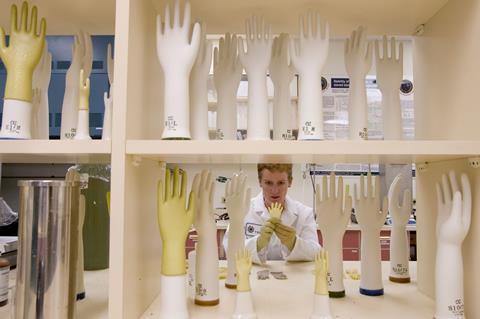
While guayule and Taraxacum are promising, their rubber isn’t as easy to harvest as the Hevea tree. Although 5–10% of guayule is rubber by weight, it is mostly confined to plant cells and can’t be tapped. In the dandelion the majority of latex is confined in the root. Latex can be extracted from both in a process Cornish describes as a ‘milkshake’. ‘We then extract the latex like cream from milk using modified dairy equipment. Latex is lighter than water, so you can send it in a different direction from biomass contaminants and end up with a very pure product.’ Water or solvent-based extraction of solid rubber is also under investigation.
Farming Taraxacum has another challenge – because most dandelions are considered weeds they are killed by many conventional herbicides used by farmers. ‘We use direct seeding,’ Cornish says ‘We have a weed specialist who works hard to control weeds with normal herbicides. Agricultural science has come a long way. Last year, we had our first major success making clean field plots.’ Unfortunately, the Covid pandemic prevented a larger demonstration.
Biofuels and beyond
One of the key advantages with guayule and Taraxacum is that their use isn’t limited to rubber production. ‘Guayule actually makes more terpene resin than it makes rubber,’ Cornish says. ‘This can be extracted with supercritical carbon dioxide or acetone and be used in the pine resin market. But the simplest approach is, once you take the latex out, to just take the bagasse [plant fibre] and convert it to fuel. If we dry the bagasse, the resin and the residual rubber from dead parts of the plant – we only get out the healthy rubber latex fraction – there is a patented process where you can get a 50,000J per gram bio-oil.’ As most of the extraction cost is paid for by latex, this creates a low-priced and sulfur-free fuel alternative.
Tyres will be made from dandelions by the end of the decade
In addition to fuel, Taraxacum contains high quantities of inulin, a dietary fibre, which can also be fermented to produce butanol or ethanol. ‘From guayule, we could have hydrocarbon-based platform chemicals, while from dandelion we could have sugar-based platform chemicals,’ Cornish adds.
If this work can be scaled up, the world could be on the cusp of a third rubber boom. ‘Tyres will be made from dandelions by the end of the decade, I’d say,’ Recker predicts. ‘But remember the last newly industrialized crop was sugar beet, 150 years ago, and that’s still being refined. We are doing things for the first time – there’s no one we can ask. It’s going to take time.’
Kit Chapman is a science writer based in Southampton, UK

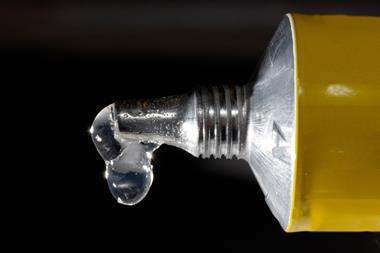
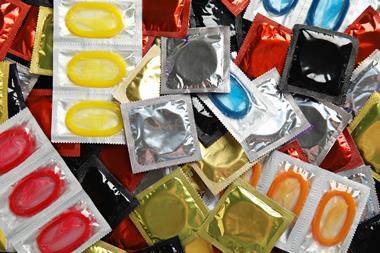
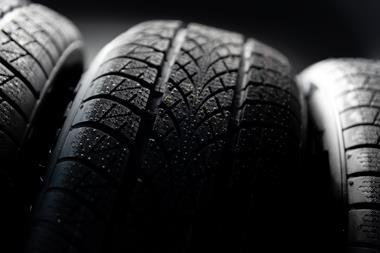









1 Reader's comment